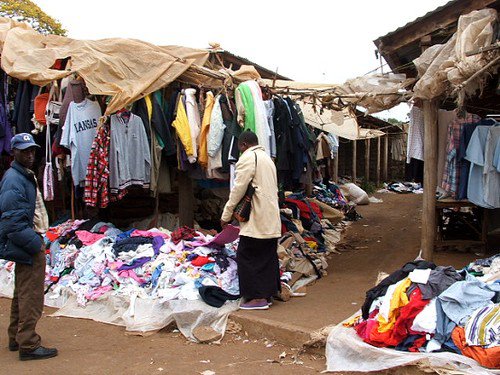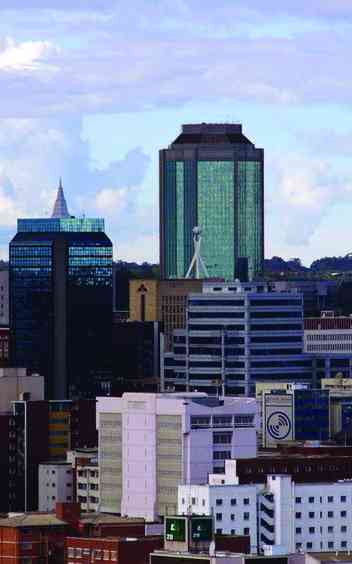
IN July 2022, the World Bank classified Zimbabwe as a lower-middle income economy, thus adding some confidence on the possibility of attaining the country’s vision of an upper middle income society by 2030.
The new dispensation, which was ushered in through elections of 2018, has embarked on a transformative journey. The aim is to rebuild the economy after more than a decade of socio-economic challenges that impeded economic growth and development.
Realising that the nation cannot succeed without vision, the government crafted an inspiring vision in 2018. The dream is for Zimbabwe to be an upper middle income economy by 2030.
The vision is thus aptly named ‘Vision 2030’ and it addresses the aspirations contained in Sustainable Development Goals and Agenda 2063 aimed at eradicating poverty in Africa. The Vision is: “Towards a prosperous and empowered upper middle income society by 2030, with job opportunities and a high quality of life for its citizens”.
Attainment of middle income status is closely linked with other indicators that measure the social, economic and environmental well-being of the country and its people.
Generally, people living in countries with higher gross national income (GNI) per capita tend to have longer life expectancies, higher literacy rates, better access to safe water, better access to health facilities (ambulances, medical personnel, drugs etc) and lower infant mortality rates, just to mention a few.
There are, however, some examples where citizens wallow in poverty despite their country being in the upper middle income, or worse still, in high income class.
Equatorial Guinea, a small but oil-rich country is an example of a country with high per capita income with poor and, on occasion, substandard levels of socioeconomic development vis-à-vis its sub-Saharan counterparts.
- Chamisa under fire over US$120K donation
- Mavhunga puts DeMbare into Chibuku quarterfinals
- Pension funds bet on Cabora Bassa oilfields
- Councils defy govt fire tender directive
Keep Reading
It has very poor health and education indicators that often lag far behind its much poorer neighbours.
According to the World Bank Statistics, Zimbabwe GNI per capita increased to US$1 400 in 2021, up from US$1 140 in 2020. When the new dispensation was ushered in 2018, GNI per capita was US$1 350 and it went on a free fall to US$1 310 in 2019 and US$1 140 in 2020 before recovering in 2021.
Zimbabwe had reached its lowest point, back in 2008 when it was US$330. Zimbabwe is still, however, just below the Sub-Saharan Africa average of US$1 578 in 2021.
In Southern Africa, Botswana, Namibia and South Africa are among five of the African states in the upper-middle income group. Zimbabwe’s GNI per capita, using the Atlas method, is well above Zambia which is at US $1 040, while Malawi was at US$630.
Highest GNI per capita in 2021 in the world was recorded in Bermuda in North America at US$116 540, and Liechtenstein in Western Europe at US$116 440, which boast of vital international financial services sectors or offshore jurisdictions (tax havens).
Closely following were Switzerland at US$90 340, Norway at US$84 090, Ireland at US$74 520 and the US at US$70 430.
The World Bank assigns the world’s economies to four income groups-low, lower-middle, upper-middle, and high-income countries. The classifications are updated each year on July 1 and are based on GNI per capita in current USD (using the Atlas method exchange rates) of the previous year.
As of July 1 2022, middle income countries (MICs) have per capita GNI of between US$1 086 and US$12 235. In the world so far, there are 110 countries falling in this category and the countries display a diverse range of regions, sizes, populations and cultures.
Low-income economies are defined as those with a GNI per capita of US$1 085 or less in 2021; lower middle-income economies are those with a GNI per capita between US$1 086 and US$4 255; upper middle-income economies are those with a GNI per capita between US$4 256 and US$13 205; high-income economies are those with a GNI per capita of US$13 205 or more.
MICs are home to 75% of the world’s population, including 62% of its poor people, and produce one-third of the global Gross Domestic Product (GDP).
GDP represents the total value of all goods and services produced in a country in a given period of time. To get the GNI the income earned by Zimbabweans living in Zimbabwe but earning income from abroad is added while income earned in Zimbabwe by foreigners is subtracted.
Moreover, the rentals, dividends, interest and other property income received by resident Zimbabweans from abroad are added whilst the same earned in Zimbabwe by foreigners is subtracted.
Subsidies on production or imports are subtracted. The thinking being that a subsidy is payment by a government to promote production or reduce the producer’s losses.
It is really not income they earned, hence the subtraction. GNI is divided by population to get GNI per capita. It reflects the average income of a country’s citizens.
There are, however, some limitations associated with the use of GNI per capita to measure welfare, for instance, GNI may be underestimated in lower-income economies that have more informal, subsistence activities.
Zimbabwe in 2018 had the second largest informal sector after Bolivia, according to the International Monetary Fund. It is estimated between 85-90% of Zimbabweans are engaged in informal economic activities at a personal, household or enterprise level.
The 2022 Labour Force Survey published by the Zimbabwe National Statistics Agency (Zimstat) points that over 2,8 million Zimbabweans derive their living from the informal sector as opposed to 495 000 in formal employment.
GNI per capita also does not reflect inequalities in income distribution. The World Bank in 2019 estimated Zimbabwe’s Gini coefficient, the measure of income or wealth distribution in a country, to be 50,4%.
A Gini coefficient that is close to 0% implies that there is perfect or equal distribution of wealth. On the other end of the spectrum, a Gini coefficient of 100% indicates gross inequality.
The World Bank also disclosed that extreme poverty in Zimbabwe rose to 38% in 2019, while general poverty went up eight percentage points to 51%.
It is desirable to be an upper middle income economy with less income disparities, underpinned by the development of a middle class.
In this regard, Zimbabwe envisages raising employment rates by 80%, defined to cover all those in formal employment. This will lead to a progressive reduction in the poverty rate, initially to under 25% of the population by 2030, from 62,5% in 2012 and 38,3% in 2019.
To achieve this middle income status while ensuring equitable income distribution, Vision 2030 targets the following, among others:
Increasing the number of households accessing electricity from 52,2% in 2017 to over 72% by 2030. Rural households’ access to electricity will increase to 60% from 27,7%, while urban households’ access will increase to 95% from 86%;
Increasing universal access to improved sources of water, up from 81% in 2017;
Increasing average Life Expectancy of over 65 years from the current 60 years, and scoring in the upper echelons of the Happiness and Prosperity Indices; and
Making noticeable improvements in the areas of awareness, knowledge adoption, food security, affordable and accessible education and health services, infrastructure development, and economic empowerment.
To realise the above targets, the country should ensure sustainable economic growth rates of between 7% and 12% per annum. The projected growth rate for 2022 has been revised to 4,6% while that for 2022 has been maintained at 5%.
Although achievement of Vision 2030 is not in any way insurmountable, it requires a stable macroeconomic environment and economic transformation sustained by high productivity levels as prerequisite.
- Chivore is an economist pchivore@gmail.com. is published in the Zimbabwe Independent and co-ordinated by Lovemore Kadenge, an independent consultant, past president of the Zimbabwe Economics Society (ZES) and past president of the Institute of Chartered Secretaries & Administrators in Zimbabwe (ICSAZ). Email-kadenge.zes@gmail.com and mobile No. +263 772 382 852.









